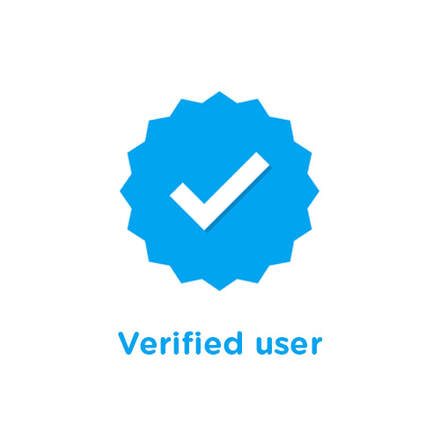PR Vs Marketing What's The Difference?While there is a thin line between marketing and Public relations, it is important to establish a distinction when establishing a business. Although the objectives of the two often overlap, understanding the differences will enable businesses to implement the right strategy for a specific goal. What is Marketing? Marketing is the activities centred on creating and promoting a particular product or service to a target market. These activities include four components of the marketing mix to aid in achieving the success of a product. The four components are
Public Relations is strategy businesses use to maintaina favourable public image. Often abbreviated as “PR”, public relations is used to influence a brand’s reputation. These endorsements are not paid for but usually must be earned through positive conversations. Companies utilize PR in different methods including:
So, what is the difference between Marketing and Public Relations? The primary difference between marketing and public relations is that marketing is centred around promoting products or services to increase sales and public relations is focused on sustaining a positive brand reputation and building relationship. While both concepts are integral to a business their strategies are different. They are different in terms of: Target audiences With marketing, brands focus on their potential or current customers while public relations is concerned with the general population. Marketing segments the population into smaller groups based on unique characteristics and public relations aims to influence wider society. Reliability and Legitimacy Public relation is earned media as opposed to marketing which is paid media. Earned media is what happens when rand awareness and publicity is gained through third-party endorsements such as word-of-mouth and press. The brand’s awareness is voluntarily given so a brand “earned” the mention. Paid media on the other hand is when a brand pays to promote its brand employing advertising. The message is paid for by the brand as opposed to third party endorsements. Metrics of Success Analyzing metrics can measure if strategies undertaken are effective. The metrics of success used to determine the usefulness of marketing and public relation initiatives are also different. A few metrics marketing will focus on are:
On the other hand, the success of a Public Relations campaign measurement will look at:
Longevity Marketing strategies are more concerned with the short-term tangible effects on sales. While PR assesses long term brand awareness. Perception takes time to create may not be converted into revenue for months or even years. Even though brands need to distinguish between marketing and PR, both roles rely on each other to promote brand success. Marketing a brand without even a little PR or doing PR without even a little marketing is counterproductive. If you have a terrible product, your brand image will not be favourable to potential customers. Read Now  While there is a thin line between marketing and Public relations, it is important to establish a distinction when establishing a business. Although the objectives of the two often overlap, understanding the differences will enable businesses to implement the right strategy for a specific goal. What is Marketing? Marketing is the activities centred on creating and promoting a particular product or service to a target market. These activities include four components of the marketing mix to aid in achieving the success of a product. The four components are
Public Relations is strategy businesses use to maintaina favourable public image. Often abbreviated as “PR”, public relations is used to influence a brand’s reputation. These endorsements are not paid for but usually must be earned through positive conversations. Companies utilize PR in different methods including:
So, what is the difference between Marketing and Public Relations? The primary difference between marketing and public relations is that marketing is centred around promoting products or services to increase sales and public relations is focused on sustaining a positive brand reputation and building relationship. While both concepts are integral to a business their strategies are different. They are different in terms of: Target audiences With marketing, brands focus on their potential or current customers while public relations is concerned with the general population. Marketing segments the population into smaller groups based on unique characteristics and public relations aims to influence wider society. Reliability and Legitimacy Public relation is earned media as opposed to marketing which is paid media. Earned media is what happens when rand awareness and publicity is gained through third-party endorsements such as word-of-mouth and press. The brand’s awareness is voluntarily given so a brand “earned” the mention. Paid media on the other hand is when a brand pays to promote its brand employing advertising. The message is paid for by the brand as opposed to third party endorsements. Metrics of Success Analyzing metrics can measure if strategies undertaken are effective. The metrics of success used to determine the usefulness of marketing and public relation initiatives are also different. A few metrics marketing will focus on are:
On the other hand, the success of a Public Relations campaign measurement will look at:
Longevity Marketing strategies are more concerned with the short-term tangible effects on sales. While PR assesses long term brand awareness. Perception takes time to create may not be converted into revenue for months or even years. Even though brands need to distinguish between marketing and PR, both roles rely on each other to promote brand success. Marketing a brand without even a little PR or doing PR without even a little marketing is counterproductive. If you have a terrible product, your brand image will not be favourable to potential customers. Comments are closed.
|
- Home
- Team
- Tik Tok
- Instagram & FB Verification
- Verified Instagram Accounts
- Instagram Usernames & Brokerage
- Verified Instagram Username Change
- Celebrity Instagram Growth Giveaways
- Verified Instagram Accounts With Desired Username
- Recover Disabled or Hacked Accounts
- Linkedin Username Claim Service
- Acquire Premium Accounts
- YouTube Verification
- Instagram Ban Service
- Twitter Verification
- Become a Forbes Contributor
- Write For Entrepreneur.com
- Verified Twitter Username Change
- Verified Facebook Page With Desired Username
- Instagram Growth
- Reputation Management
- Snapchat Verification
- Famous Birthdays
- Wikipedia Page Creation
- Google Knowledge Panel
- Spotify promotion
- Google News Approval Service
- PR for Influencers & Content Creators
- PR for Brands & Startups
- PR for Crypto, Blockchain & DeFi Companies
- PR for Musicians & Artists
- Partner Program
- Careers
- Blog Articles
- Clients
- Contact
Contact
Only Official Email Address [email protected]Always email directly via our official email to make sure you're liaising with us!
|
|




